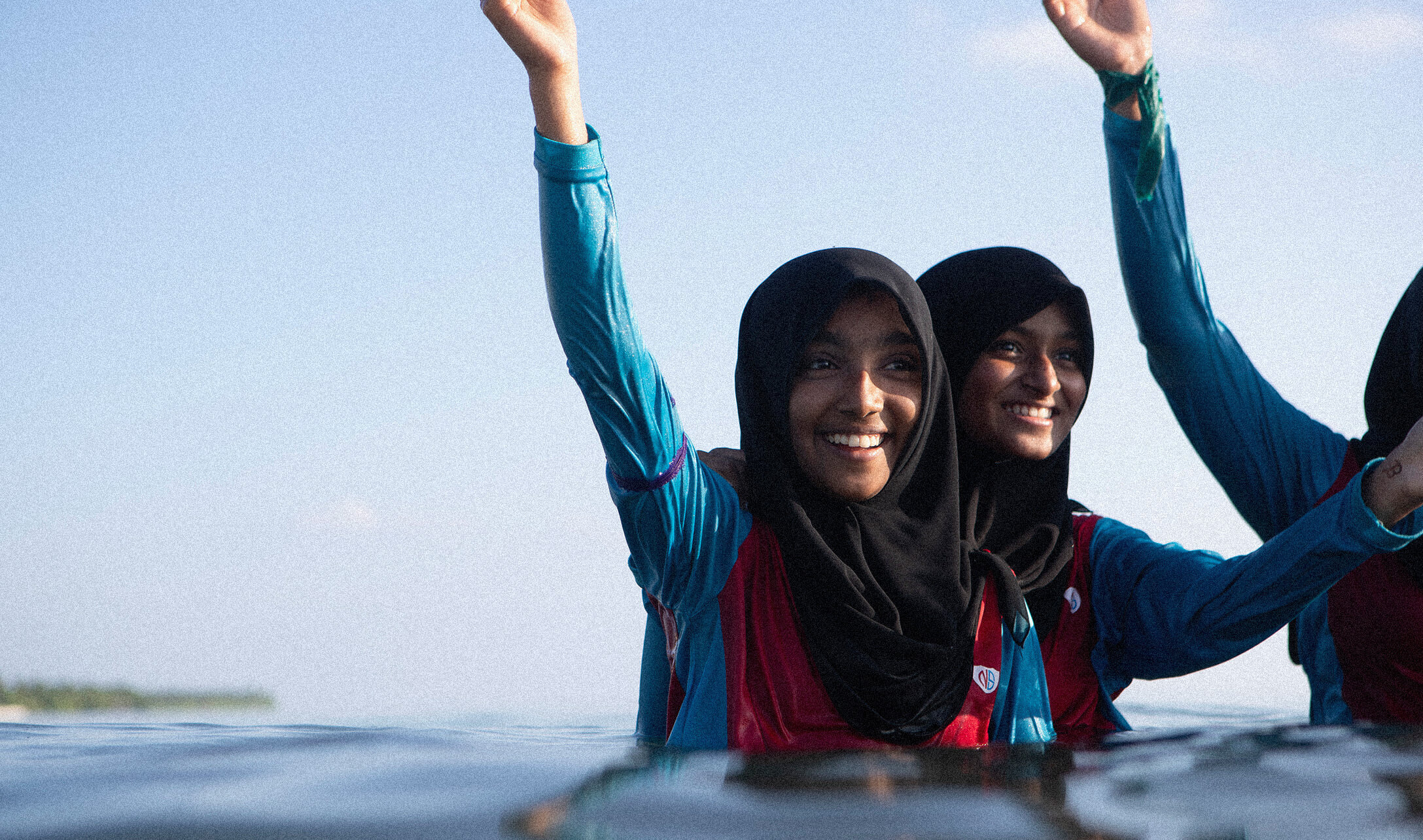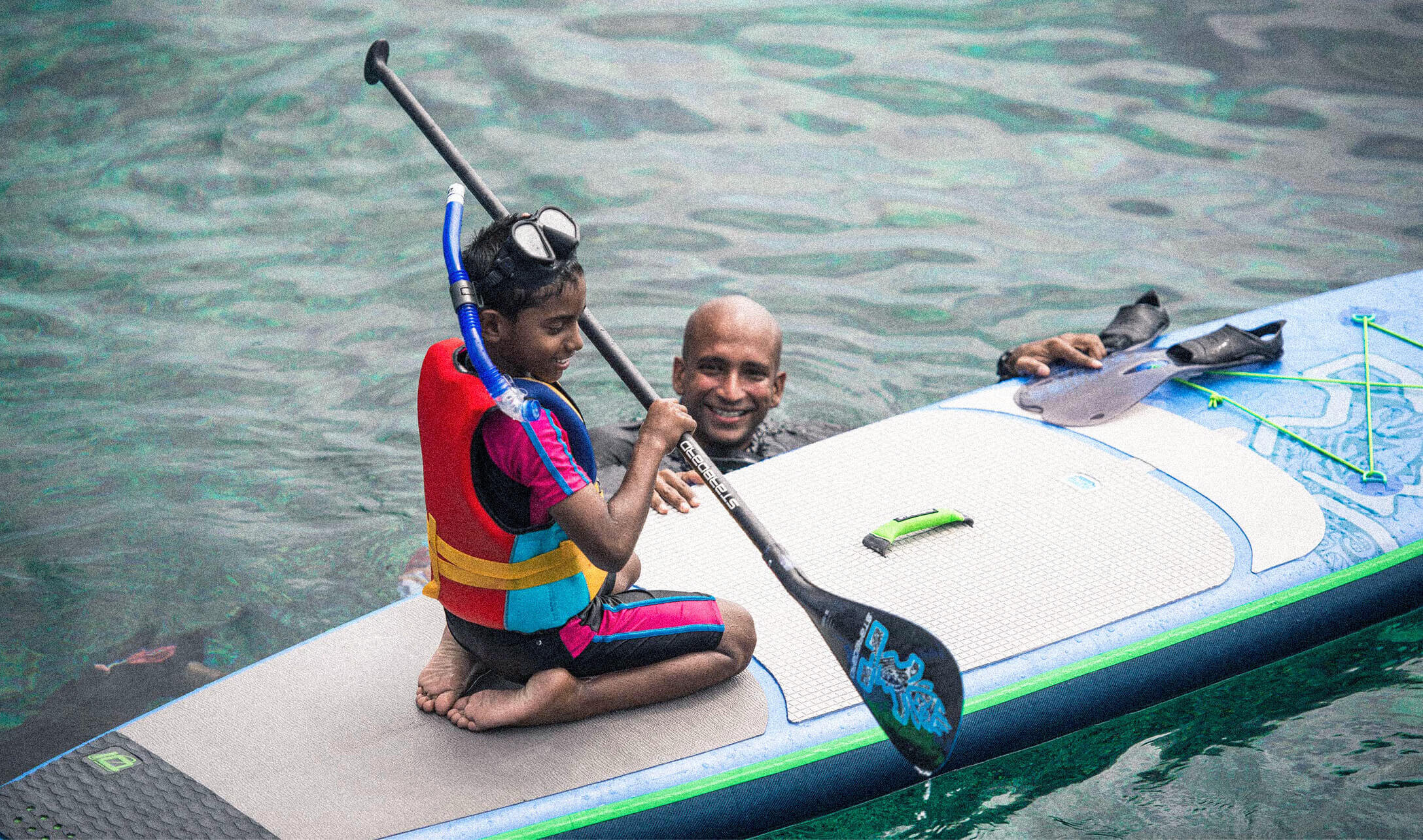The Maldives: A Wonder of the World
CAST A LOOK BACK THROUGH DEEP GEOLOGICAL TIME TO UNDERSTAND HOW THE COUNTRY'S 1,200 ISLANDS CAME INTO BEING, AND AT THE ECO-INNOVATIONS THAT PROMISE TO PRESERVE THIS JEWEL OF THE INDIAN OCEAN.
“We came to a little island in the archipelago in which there was but one house, occupied by a weaver. He had a wife and a family, a few coco-palms and a small boat, with which he used to fish and to cross over to any of the islands he wished to visit,” wrote the legendary traveler Ibn Battutah of his journey to the Maldives, part of a 29-year odyssey across the Muslim world, which Dhibat al-Mahal, as the country was then known, had joined just a century before. “And I swear I envied that man, and wished that the island had been mine, that I might have made it my retreat until the inevitable hour should befall me.” Even back in the mid-14th century, this constellation of low-lying coral isles peeking out above endless expanses of tropical ocean was a “wonder of the world” you’d never wanted to leave: Battutah planned to stop for only a few months but ended up spending a year-and-a-half in the Maldives.
How the country that gave us the word atoll came into being is a little less serene, however. 200 million years ago, as Pangea split apart into the continents we know today, fiery lava rose up from the Earth’s core, filling the gaps that appeared on the ocean floor to create a necklace of volcanic mountains in a newborn Indian ocean. As the tectonic plates began to settle, these highlands began to gradually sink back into the depths from which they emerged. Over time, layers upon layers of coral grew around their submerged craters, creating rings and barrier reefs that enclose shallow lagoons in the negative space – perfect environments for marine life to evolve.
“With an average elevation of only a few feet, these distant lands are particularly vulnerable to the twin threats of climate change and plastic pollution ”
Fast forward this process a few million years and we have 1,192 coral islands and sandbars sitting atop a submarine ridge halfway between Africa and South-East Asia – imprints of deep geological time in the middle of the ocean. Spanning 35,000 square miles either side of the Equator, of which only 1,155 are dry land, 99 percent of the country lies under the waves. Home to some of the most abundant waters anywhere on the planet, the sheer variety of species they host is dazzling: over 1,200 species of fish, 400 molluscs, 250 corals, 145 crabs, 83 echinoderms – starfish, sea urchins and sea cucumbers – 48 shrimps, 21 whales, and five sea turtles, all living in waters so rich with bioluminescent plankton that the Maldives are one of the few places in the world where the beaches glow in the dark all year round.
Photo courtesy of Manta Trust
“In my 30 years of diving, I have not once seen a person not change their perspective on how they feel about the deep blue after a dive or snorkel”
As an organization that seeks to raise awareness of the beauty and fragility of our oceans, and to collaborate on projects that can end their destruction, Parley has long placed a particular focus on this jewel of the Indian Ocean. With only 200 of the Maldives’ islands inhabited, these distant lands are particularly vulnerable to the twin threats of climate change and plastic pollution – with an average elevation of only a few feet, the country’s highest point is the Thilafushi landfill site. “We suffer from problems we didn’t create and materials we didn’t invent,” as H.E. Ibrahim Mohamed Solih, the country’s President, put it succinctly at a 2016 United Nations Oceans Week session hosted by Parley.
Since that meeting, Parley has worked in close collaboration with the republic to implement the A.I.R. (Avoid. Intercept. Redesign.) strategy to combat plastic pollution across the Maldives. The pilot phase saw Parley introduce plastic interception programs, beach clean-ups and baling sites in more than 70 island communities – and the first ever-recycling center and innovation lab in the nation’s capital, Malé, a laid-back, low-rise metropolis connected to the country’s international airport by the Sinamalé sea-bridge.
Parley Ocean School programs have helped more than 100,000 children and their parents go swimming and snorkeling to experience the world beneath the blue surface – many for the first time, and changing hearts and habits as a result. “In my 30 years of diving, I have not once seen a person not change their perspective on how they feel about the deep blue after a dive or snorkel,” explains Parley Maldives Executive Director, Shaahina Ali.
In 2019, the Maldives became a founding member of Parley’s Future Island Nation program to develop scalable models for government and industry-led responses to ocean and climate-threats, and establish new economies in which harmful materials and business practices are relics of the toxic past. As a collaborative fundraising platform which empowers consumers to protect specific locations in the Maldives impacted by plastic pollution, Clean Waves is one such proof of concept for a new circular economy.
Clean Waves focuses on some of the remotest uninhabited islands of the Maldives – some more than 400km from Malé. And, as you can imagine, getting around a country where only one percent of it is actual land can be a bit of a challenge. With the costs of seaplanes and boat fuel being prohibitively expensive, Parley’s Maldives team often hitch a lift with the private shuttles that whisk honeymooners off to their overwater villas on one of the country’s 136 resort islands, and with the fishermen who ply their trade in traditional dhoni boats.
These alliances are vested in mutual interest: 1.7 million people visited the Maldives in 2019, and tourism accounts for nearly one-third of the country’s GDP; fishing employs one in three Dhivehi (Maldivians). And while resorts may clean their islands’ beaches daily, with plastic there is no ‘away’ – when a piece of plastic touches the surface of a stream, river, lake or ocean, it becomes very difficult to recover. So over time, it accumulates in coastal ecosystems, swallowing up once pristine beaches. Plastic coats the seafloor, strangling and starving marine life. And most insidiously, breaks apart into smaller and smaller fragments, becoming virtually impossible to ever clean up.
“We suffer from problems we didn’t create and materials we didn’t invent”
Describing the changes she’s witnessed to the ocean in her lifetime, Shaahina says, “Watching full blooming reefs die in an El Niño, trying to recover and then the surviving corals and new recruits being hit again, and again. Temperature changes and coral bleaching are happening in closer intervals, not allowing proper time for reefs to fully recover back to health. Also, the amount of garbage on our reefs has increased dramatically over the years – especially waste from packaging, textiles and plastics.”
Plastic is intrinsically linked to climate change: for every kilogram of plastic produced, six kilograms of CO2 are emitted into the atmosphere, changing the temperature and pH levels of the oceans. The rising sea levels that are a consequence of global heating threaten to swallow this country of low-lying isles by the end of this century. Yet, most mind-blowing of all, fossil fuel extraction and plastic production are set to increase drastically over the coming decades. In turn, the flow of plastic entering our oceans is expected to triple by 2040 – the equivalent of 50kg for every meter of coastline in the world. So, while we wait for innovations from the Material Revolution to deliver us viable alternatives, it only makes sense we upcycle the plastic that already exists and transform it into something that benefits the environment it lives in.
To establish the first nationwide implementation of Parley’s A.I.R. strategy to combat plastic pollution, Shaahina and the Parley Maldives team have grown and engaged a network of island communities, schools, resorts, businesses, NGOs and government agencies. The programs developed worked towards reducing plastic waste, increasing recycling, boosting eco-innovation, strengthening existing conservation efforts and inspiring a new generation of ocean advocates.
“Plastic is intrinsically linked to climate change: for every kilogram of plastic produced, six kilograms of CO2 are emitted into the atmosphere, changing the temperature and pH levels of the oceans”
Now, Future Island Nation expands the collaboration to include the Ministry of Environment and the national waste management company, WAMCO, in a 10-year action plan. Immediate steps include policy change, the expansion of recycling infrastructure, beach clean-ups and community education initiatives across all levels of society, industry and government. Education and direct-action initiatives will also be offered to tourists visiting the country, empowering visitors to become messengers for the oceans who bring change back to their homeland.
The base for this eco-innovation initiative will be a small island in the south of the Maldives, where Parley is building a permanent collaboration space, Parley Station One. Located on the island Kondeymatheelaabadhoo in the southern Gaafu Alifu Atoll, the base will be a launch-pad for creators, leaders and thinkers to research and develop their visions for a new, blue economy. While the Maldives may be one of the most beautiful and geographically disparate nations in the world, it’s also one of the strongest examples of unity and collaboration in response to major ocean threats.













